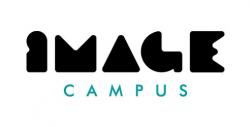What Does a Storyboard Artist Do?
Storyboard artists draw storyboards for animated features, films, television commercials and other ad campaigns, music videos, video games, and more. The storyboard artist begins creating the storyboard after a concept or script has been written. The storyboard presents the “action” in a series of scenes or “panel by panel,” which allows filmmakers, advertisers, and producers to evaluate the project before beginning production. Storyboards are also used to provide direction during production.
Storyboard artists draw scenes by hand or computer. They might sketch in black and white or produce full color storyboards manually or by computer. Also called “storyboarders,” storyboard artists work with producers, directors, and film crew from start to finish by sketching scenes during initial meetings, and editing or eliminating scenes as the project progresses.
Where Do Storyboard Artists Work?
Job opportunities for storyboarders are pretty extensive. Because they are fine artists, plenty of opportunities for storyboard artists exist outside of entertainment. In addition to animation studios, film studios, game development companies, television studios, and advertising agencies, storyboard artists can find opportunities in graphic design, education, publishing, medical and healthcare, legal, forensics, government, science, architecture, and more.
What is the Job Outlook for Storyboard Artists?
The Bureau of Labor Statistics (BLS) reports employment for fine artists as a major group. This includes illustrators, painters, and sculptors. Employment for this group is expected to grow 6% for the 2016-2026 decade, which is as fast as average for all occupations. This will add 3,100 positions to the current (salaried) workforce of around 53,400 artists. Keep in mind that the employment outlook varies by industry. For example, employment of animators is projected to grow 8% for the 2016-2026 decade.
Find a school
This is about as fast as average for all occupations. Employment in the film industry is projected to grow 12%, which is faster than average for all occupations, and employment in game development (software development) is projected to grow 24%, which is much faster than average for all occupations. Growth in both advertising and education is 10%, healthcare is 18%, and growth for both architecture and graphic design is 4%.
Other Schools to Consider:
Selected Campus Locations:
Animation Career Review Rankings:
- Top 50 Nationally for Animation (#14) - 2024
- Top 50 Nationally for Game Design (#12) - 2024
- Top 50 Nationally for Graphic Design (#28) - 2023
Selected Campus Locations:
Animation Career Review Rankings:
- Top 50 Private Graphic Design Schools in the US (#36) - 2023
Selected Campus Locations:
Animation Career Review Rankings:
- Top 25 International Animation Training Programs (#16) - 2023
Selected Campus Locations:
- Buenos Aires, Argentina & Online
Animation Career Review Rankings:
- Top 25 International Animation Schools - 2023 (#23)
How Much Do Storyboard Artists Make?
The median annual wage for fine artists is $48,960. The lowest 10% earn less than $22,020, and the highest 10% earn more than $101,400. For storyboard artists working in the animation industry, note that multimedia artists and animators average $72,520. The lowest 10% earned less than $40,870, and the highest 10% earned more than $124,310. Storyboard artists in the animation industry can expect their salaries to fall somewhere in between fine artists and animators.
In addition to industry, salaries vary based on geographic location, type and size of company, and many other factors. For example, the highest paying states for fine artists are:
- Connecticut - $80,010
- California - $76,230
- Oklahoma - $65,140
- New Jersey - $62,840
- Arizona - $62,200
Some of the lowest paying states are Arkansas ($24,510), South Carolina ($28,070), Montana ($31,150), New Mexico ($35,110), and Missouri ($39,430).
The top paying industries for fine artists are:
- Computer Systems Design and Related Services - $88,100
- Architectural, Engineering, and Related Services - $86,700
- Aerospace Product and Parts Manufacturing - $81,630
- Motion Picture and Video Industries - $80,320
- and Related Services - $72,250
Salaries for the top five industries with the highest levels of employment for fine artists are:
- Independent Artists, Writers, and Performers - $52,200
- Motion Picture and Video Industries – 80,320
- Other Miscellaneous Store Retailers - $46,780
- Colleges, Universities, and Professional Schools - $57,890
- Newspaper, Periodical, Book, and Directory Publishers - Not Reported
How Do I Become a Storyboard Artist?
Many employers prefer to hire storyboard artists with a bachelor’s or master’s degree in art, fine art, illustration, digital art, drawing and painting, or other related area. Experience is preferred as well. Aspiring storyboard artists may obtain valuable experience through an internship or entry-level position. Some storyboard artists with exceptional talent, but little formal training, may qualify for some entry-level positions.
Which Schools Offer Programs for Aspiring Storyboard Artists?
Just a few schools that offer programs for aspiring storyboard artists include:
- Brigham Young University, BFA Illustration
- California Baptist University, BA, Minor Illustration
- California State University Fullerton, BFA Art, Drawing and Painting
- Columbia College Chicago, BA, BFA Illustration (drawing, painting, cartooning, typography, digital illustration, figure drawing)
- George Washington University, Corcoran School of the Arts & Design, BA, BFA, Dual Degree, Minor Fine Art
- Indiana University South Bend, BFA Drawing and Painting
- Massachusetts College of Art and Design, BFA Industrial Design
- Montclair State University, BFA Animation/Illustration
- Pace University, BA Art with Digital Media, (Animation, Illustration, Graphic Design, Web Design, 3D Design)
- Rochester Institute of Technology (RIT), BFA, MFA Industrial Design
- San Jose State University, BA Design Studies (Animation/Illustration Area)
- Savannah College of Art and Design (SCAD), BA, BFA, MA, MFA Illustration with a Minor in Illustration for Entertainment or Animated Illustration and Publication Design; BA, BFA, MA, MFA Sequential Art; BFA, MFA Industrial Design
- University of Southern California, BFA Studio (with 24 units of Fine Arts electives)
- Washington University-St. Louis, Sam Fox School of Design and Visual Arts, BFA, Emphasis in Illustration, Interaction Design
- Westfield State University, BA Illustration
In addition to RIT and SCAD, schools such as DePaul University, Maryland Institute College of Art (MICA), Memphis College of Art (MCA), New York Film Academy (NYFA), Oregon College of Art and Craft (OCAC), Pennsylvania Academy of Fine Arts (PAFA), Syracuse University, and the College of Visual and Performing Arts (CVPA) at UMass Dartmouth offer graduate programs in fine art, illustration, drawing, industrial design, and/or animation.
Awesome Animation Fact: When it comes to creating likable characters, sometimes it’s best to go back to the drawing board until you get it right. According to Yahoo!7, one of the world’s most loved animated characters, Woody from Toy Story, was originally written to be a type of ‘sarcastic jerk’ who frequently insulted other toys throughout the film. Fortunately, Disney deemed this character totally unwatchable and halted film production until a more appealing personality for Woody was developed.





